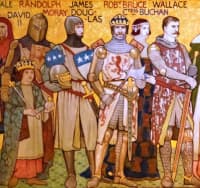The Late Medieval Period, also known as the Late Middle Ages, roughly spans from 1300 to 1500 AD. This period is marked by significant events and transitions leading up to the Renaissance. The Late Medieval Period was a time of turmoil but also of cultural and societal advancements. It laid the groundwork for the Renaissance and the modern era.
The Late Middle Ages followed the High Middle Ages and preceded the onset of the early modern period.
Key Events and Developments
Europe
- The Hundred Years’ War (1337-1453): A series of conflicts waged between the Kingdom of England and the Kingdom of France, along with various allies.
- The Black Death (1347-1351): A devastating pandemic resulting in the death of a significant portion of Europe’s population.
- The Great Schism (1378-1417): A split within the Catholic Church, resulting in multiple popes claiming authority.
Asia
- The Ming Dynasty (1368-1644): In China, the Ming dynasty was established after the fall of the Mongol-led Yuan dynasty.
- Timur’s Conquests (1370-1405): Central Asia and parts of the Middle East saw the military campaigns of Timur (Tamerlane).
Africa
- The Rise of Great Zimbabwe (1100-1450): Great Zimbabwe became the capital of a thriving trading empire.
Important Figures
- Geoffrey Chaucer (1343-1400): An English poet and author, best known for “The Canterbury Tales.”
- Joan of Arc (1412-1431): A French heroine who played a key role in the Hundred Years’ War.
Societal and Cultural Developments
- Gothic Architecture: Flourishing of Gothic architecture, with the construction of famous cathedrals such as Chartres.
- Universities: Establishment and growth of universities as centers of learning.
